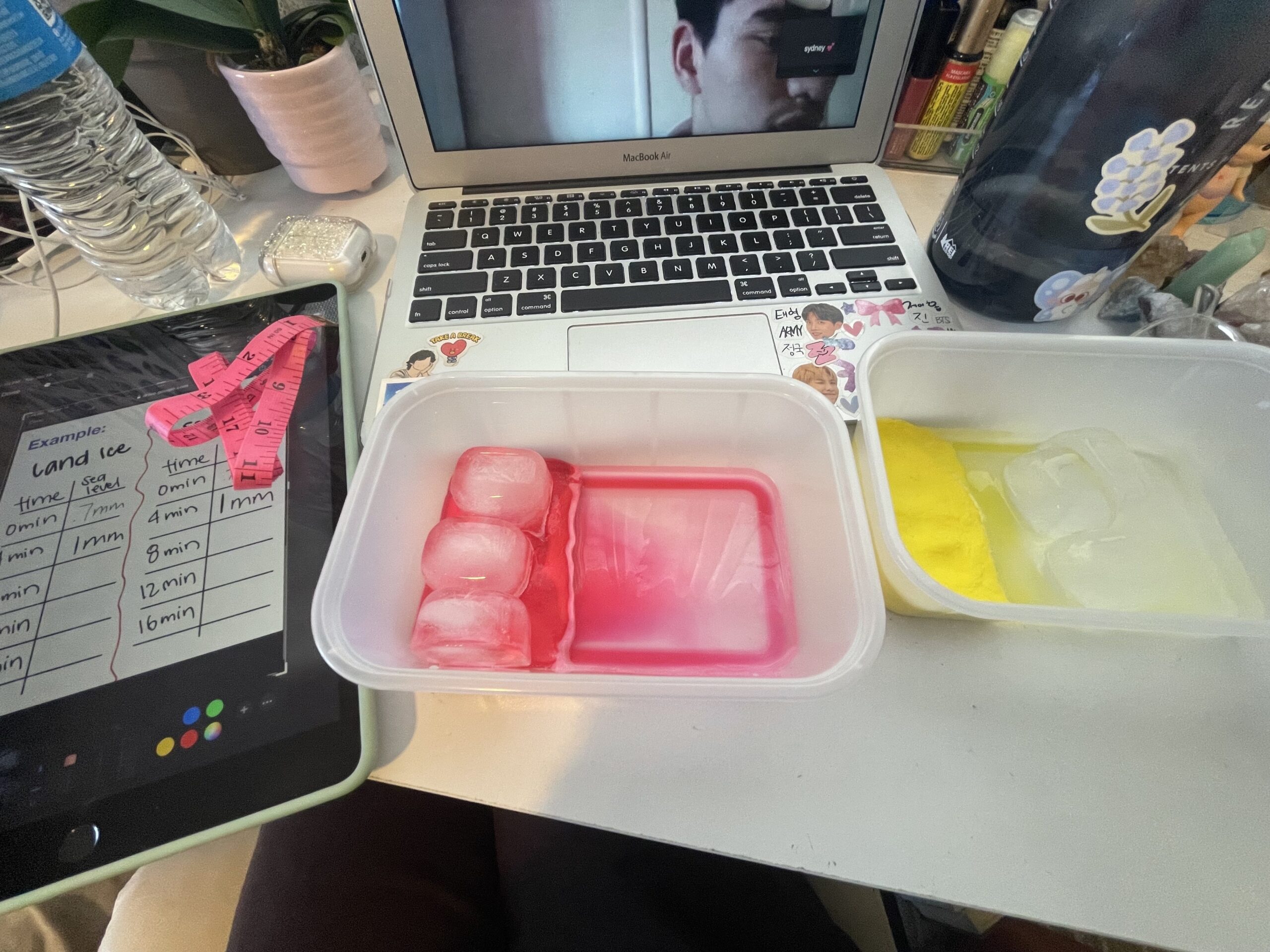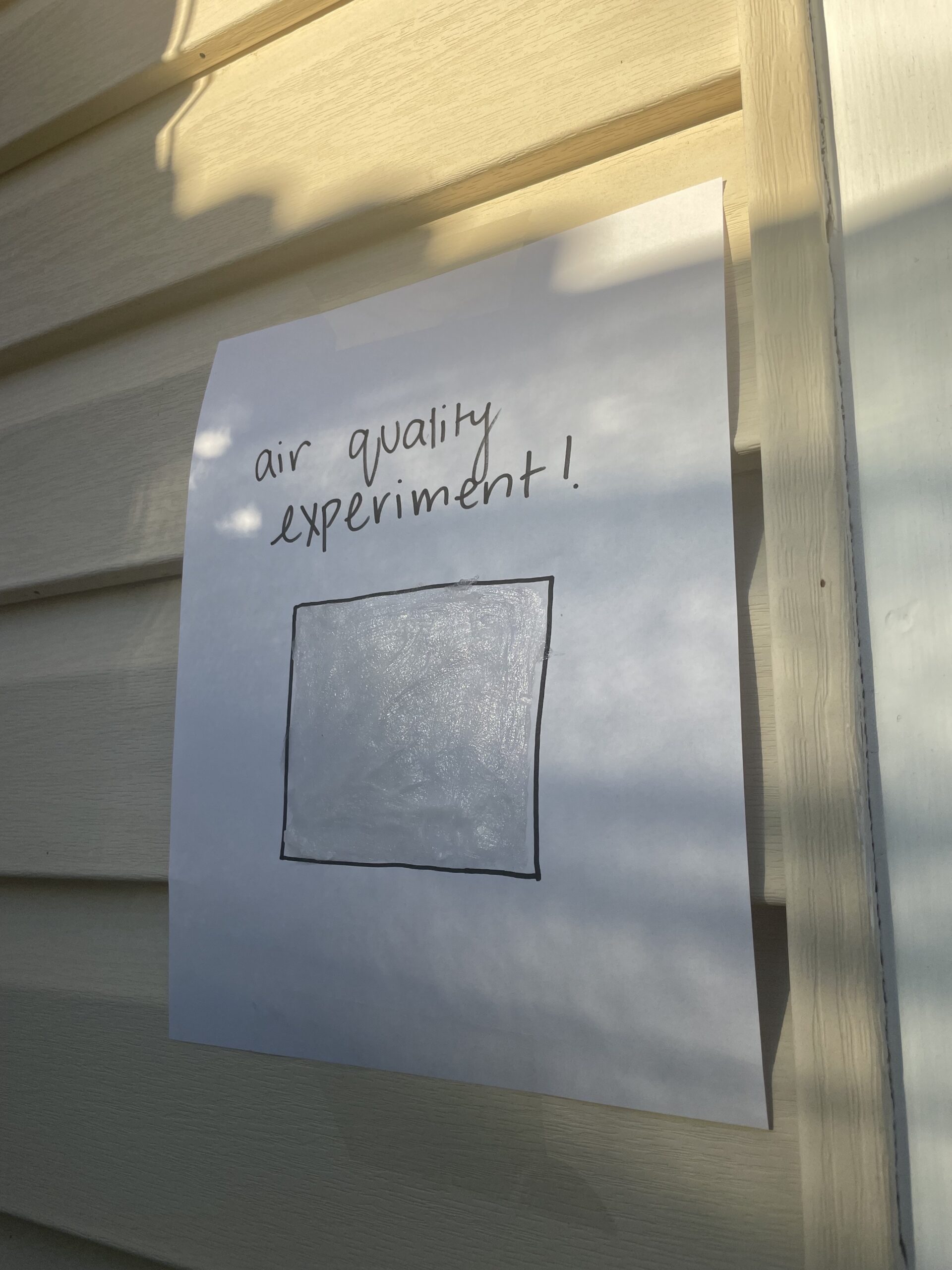Engaging Youth in a Virtual World
In June, New Voices kicked off the 2022 Summer Climate Justice Academy. During this six-week long program, high school-aged youth take a deep dive into local environmental justice issues, building their leadership, advocacy, and organizing skills along the way. This year’s cohort includes 30 youth of color from frontline communities across the Bay Area.
Each week is structured around a different environmental justice issue. These topics include energy, food, air quality, housing, and water. While the program has returned to host several in-person events, the majority of lessons occur online. But with two years of remote teaching under their belts, our New Voices team has developed creative at-home activities to deepen students’ engagement and further their understanding of environmental justice.

Sea level rise simulator.
During the first week of the Summer Academy, the students explored energy and how it relates to climate change. They discussed dirty energy, renewable energy, and the energy sources students would like to see in their communities. To demonstrate the link between energy use and climate change, the students conducted an at-home sea level rise experiment. Using materials provided by the NVR leaders, students created a simulation of land ice and sea ice to see which melts faster. The youth took measurements and recorded data at regular intervals. Afterwards, they wrote and shared explanations of what they observed. For most, the “land ice” increased the volume of water while the “sea ice” remained about the same. They related the model to global events, showing how the rise in average temperatures melts glaciers, thus contributing to rising sea levels. From this experiment, our students made the connection between pollution, warmer climates, and sea level rise.

A screenshot from the air quality power point.
 For week three of the Summer Academy, New Voices youth covered air quality. Students learned about air quality’s connection to climate change, major polluters in the Bay Area, legal efforts at the state and local level to mitigate pollution, and air quality monitoring. The students then performed a simple at-home activity to measure air quality in their own community. On a blank piece of paper, the youth drew a square and filled it in with petroleum jelly. They taped this paper outside of their home and left it for several days. On Friday, students examined their paper and compared results over Zoom. Those with more gardens and plants near their home had clearer squares of petroleum jelly. Students determined that the more yellow the square, the worse the air quality. While the severity of yellow varied, the majority of squares signified some level air pollution. Many youth were shocked to learn about their community’s poor air quality, and committed to learning ways to mitigate the problem.
For week three of the Summer Academy, New Voices youth covered air quality. Students learned about air quality’s connection to climate change, major polluters in the Bay Area, legal efforts at the state and local level to mitigate pollution, and air quality monitoring. The students then performed a simple at-home activity to measure air quality in their own community. On a blank piece of paper, the youth drew a square and filled it in with petroleum jelly. They taped this paper outside of their home and left it for several days. On Friday, students examined their paper and compared results over Zoom. Those with more gardens and plants near their home had clearer squares of petroleum jelly. Students determined that the more yellow the square, the worse the air quality. While the severity of yellow varied, the majority of squares signified some level air pollution. Many youth were shocked to learn about their community’s poor air quality, and committed to learning ways to mitigate the problem.
Online learning resulting from the pandemic remains a challenge for educators everywhere. Our New Voices team exemplifies the creative solutions born of this difficult time and how we can enrich education in a remote world. Stay tuned for the Community Summit where students will present what they learned during the Summer Academy.